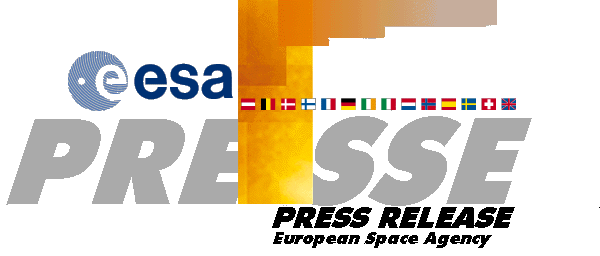

ESA (European Space Agency) and NASA engineers, reasoning that over the next two-to-three months the spacecraft's solar panels will increasingly face the Sun and generate power, are continuing their efforts to contact the Solar and Heliospheric Observatory (SOHO) spacecraft.
Meanwhile, the ESA/NASA investigation board concentrates its inquiry on three errors that appear to have led to the interruption of communications with SOHO on June 25. Officials remain hopeful that, based on ESA's successful recovery of the Olympus spacecraft after four weeks under similar conditions in 1991, recovery of SOHO may be possible.
The SOHO Mission Interruption Joint ESA/NASA Investigation Board has determined that the first two errors were contained in preprogrammed command sequences executed on ground system computers, while the last error was a decision to send a command to the spacecraft in response to unexpected telemetry readings. The spacecraft is controlled by the Flight Operations Team, based at NASA's Goddard Space Flight Center, Greenbelt, MD.
The first error was in a preprogrammed command sequence that lacked a command to enable an on-board software function designed to activate a gyro needed for control in Emergency Sun Reacquisition (ESR) mode. ESR mode is entered by the spacecraft in the event of anomalies. The second error, which was in a different preprogrammed command sequence, resulted in incorrect readings from one of the spacecraft's three gyroscopes, which in turn triggered an ESR.
At the current stage of the investigation, the board believes that the two anomalous command sequences, in combination with a decision to send a command to SOHO to turn off a gyro in response to unexpected telemetry values, caused the spacecraft to enter a series of ESRs, and ultimately led to the loss of control.
The efforts of the investigation board are now directed at identifying the circumstances that led to the errors, and at developing a recovery plan should efforts to regain contact with the spacecraft succeed.
ESA and NASA engineers believe the spacecraft is currently spinning with its solar panels nearly edge-on towards the Sun, and thus not generating any power. Since the spacecraft is spinning around a fixed axis, as the spacecraft progresses in its orbit around the Sun, the orientation of the panels with respect to the Sun should gradually change. The orbit of the spacecraft and the seasonal change in the spacecraft-Sun alignment should result in the increased solar illumination of the spacecraft solar arrays over the next few months. The engineers predict that in late September 1998, illumination of the solar arrays and, consequently, power supplied to the spacecraft, should approach a maximum. The probability of successfully establishing contact reaches a maximum at this point. After this time, illumination of the solar arrays gradually diminishes as the spacecraft-Sun alignment continues to change.
In an attempt to recover SOHO as soon as possible, the Flight Operations Team is uplinking commands to the spacecraft via NASA's Deep Space Network, managed by NASA's Jet Propulsion Laboratory, Pasadena, CA, approximately 12 hours per day with no success to date. A recovery plan is under development by ESA and NASA to provide for orderly restart of the spacecraft and to mitigate risks involved.
The recovery of the Olympus spacecraft by ESA in 1991 under similar conditions leads to optimism that the SOHO spacecraft may be recoverable once contact is re-established. In May 1991, ESA's Olympus telecommunications satellite experienced a similar major anomaly which resulted in the loss of attitude, leading to intermittent power availability. As a consequence, there was inadequate communication, and the batteries and fuel froze. From analysis of the data available prior to the loss, there was confidence that the power situation would improve over the coming months.
A recovery plan was prepared, supported by laboratory tests, to assess the characteristics of thawing batteries and propellants. Telecommand access of Olympus was regained four weeks later, and batteries and propellant tanks were thawed out progressively over the next four weeks. The attitude was then fully recovered and the payload switched back on three months after the incident. Equipment damage was sustained as a result of the low temperatures, but nothing significant enough to prevent the successful resumption of the mission. The experience of Olympus is being applied, where possible, to SOHO and increases the hope of also recovering this mission.
Estimating the probability of recovery is made difficult by a number of unknown spacecraft conditions. Like Olympus, the hydrazine fuel and batteries may be frozen. Thermal stress may have damaged some of the scientific instruments as well. If the rate of spin is excessive, there may have been structural damage. SOHO engineers can reliably predict the spacecraft's orbit through November 1998. After that time, the long-term orbital behavior becomes dependent on the initial velocity conditions of the spacecraft at the time of the telemetry loss. These are not known precisely, due to spacecraft thruster activity that continued after loss of telemetry, so orbital prediction becomes very difficult.
More information on SOHO, including status reports, is available on the internet at: http://sohowww.estec.esa.nl or via the new ESA science website at: http://sci.esa.int/